Sheet Music Art from the Ragtime and Jazz Eras
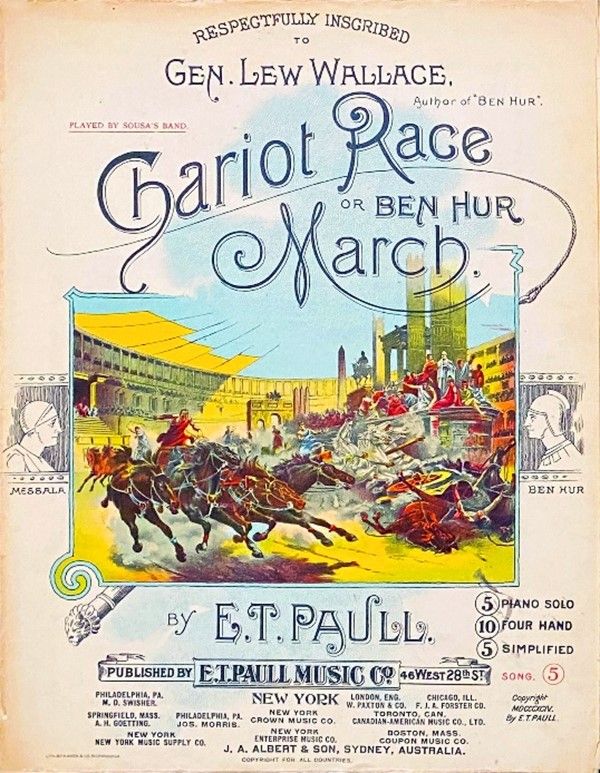
I am not a musician.
I can’t read a note on a piece of sheet music. However, I have so far accumulated a collection of sheet music, ranging from 1894 to 1972, which consists of over 440 titles. It took me a while to figure out my attraction to collecting this type of ephemera, but it boils down to being a fan of the cover art, and having a curiosity about the history of the artists and the eras these pieces depict (plus it’s fun to check out the amusing song titles and the dated lyrics inside).
The Ragtime Era lasted from the 1890’s to the 1910’s, and the Jazz Era followed in the 1920’s, ending (arguably) with the start of the Great Depression. These were the times when artwork on the covers of sheet music was most diverse and of its highest quality. In the 1930’s, the art started taking a back seat to photographs of performers, and by the 1940’s, if present at all, it was reduced to simple background graphics.
Sheet music consisted mainly of musical pieces for the piano. Pianos were found in many homes across America before the invention of phonographs, radio, or TV, and they were, for a time, the main outlet for in-home entertainment.
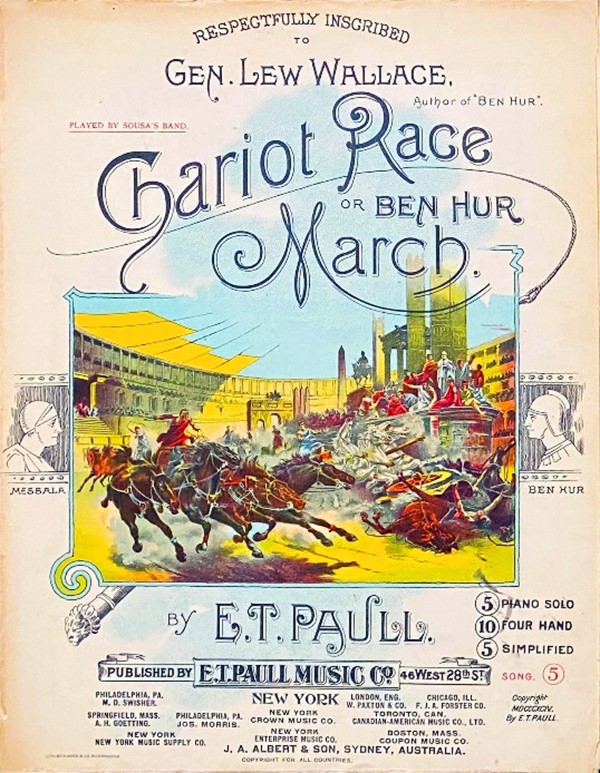
The artwork on the covers ranged from basic cartoonish drawings to vividly-colored lifelike paintings, but all had eye-catching designs because they were there to help sell the sheet music. The artists who illustrated the covers sometimes worked in-house for the publishers, or externally in art studios, but the top artists were more often independent contractors. Almost all of them used their artistic talents on more than just sheet music. There is extensive reference material on many of these artists in books by Marion Short. Sadly, a large number of artists’ names did not make it to the covers, so they were never properly credited for their work.
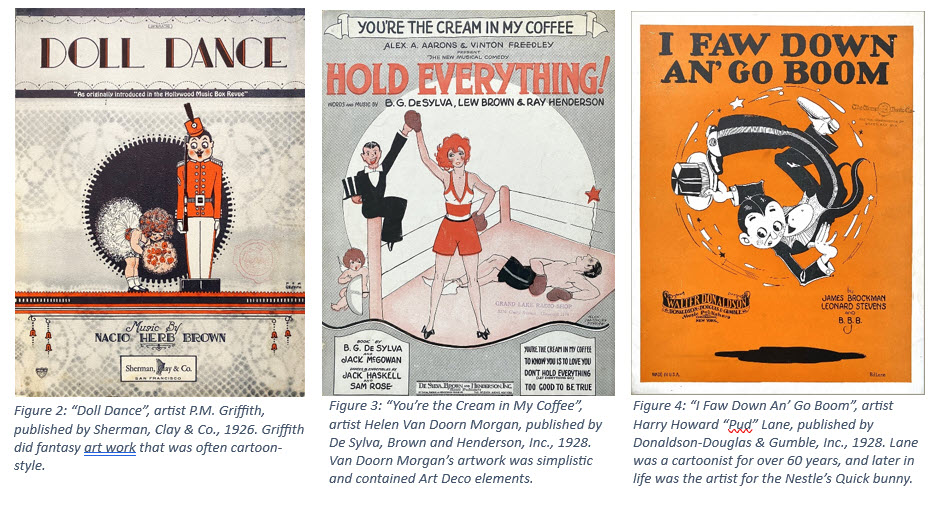
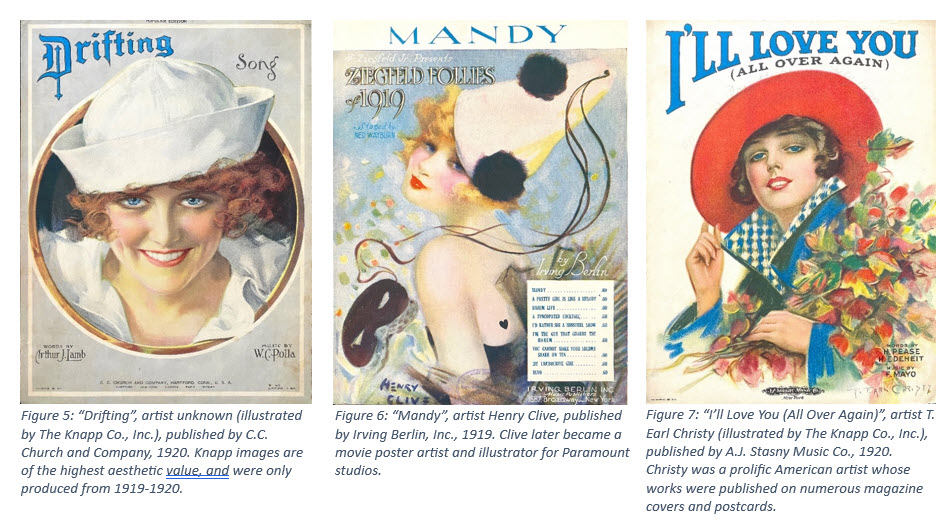
There were many historic events and inventions during the Ragtime & Jazz Eras, captured in song and cover art.
The invention of the airplane inspired songs about the thrill of flying, and after Ford started mass-producing cars in America, he was fittingly honored.
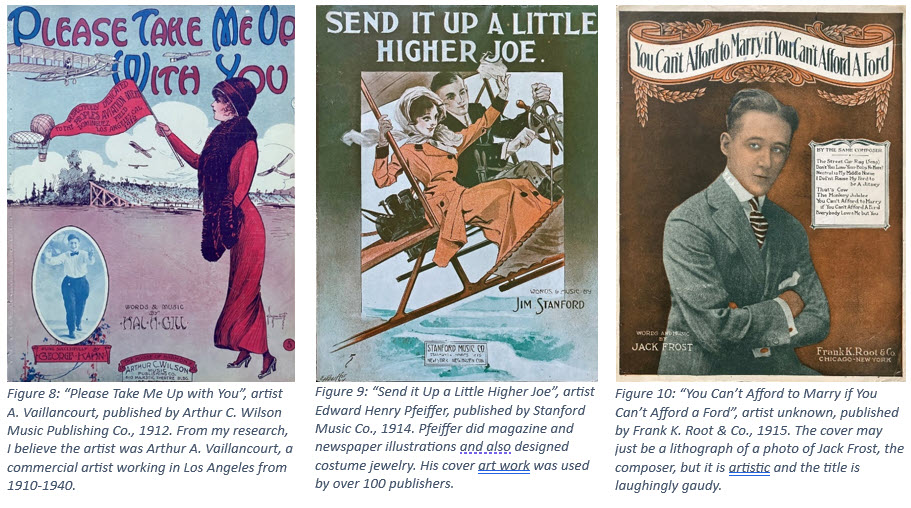
The 1914 opening of the Panama Canal led to the 1915 Panama–Pacific International Exposition, which encouraged the adoption of the ukulele in mainland music, and spurred interest in all things Hawaiian (well, mostly hula girls).
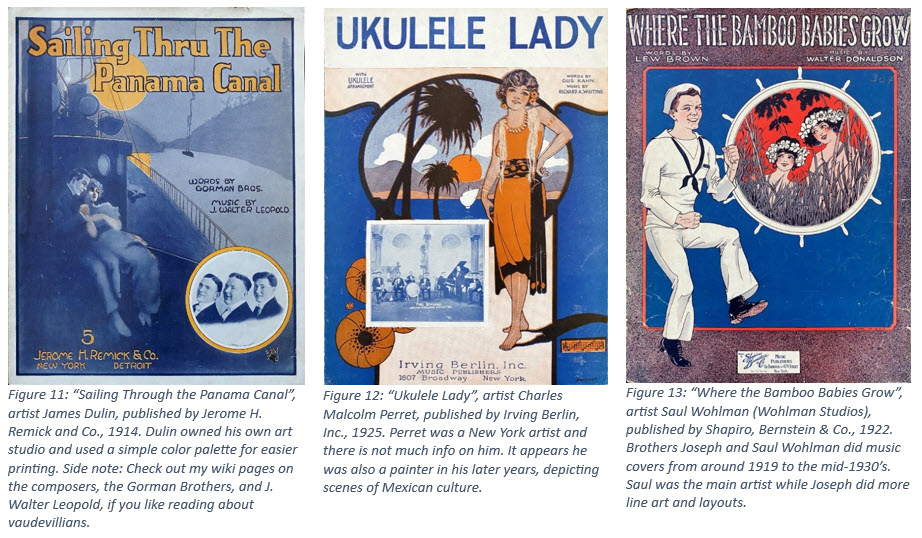
The hyper-patriotism in WWI (1914-1918) inspired a large number of melodies and illustrations.
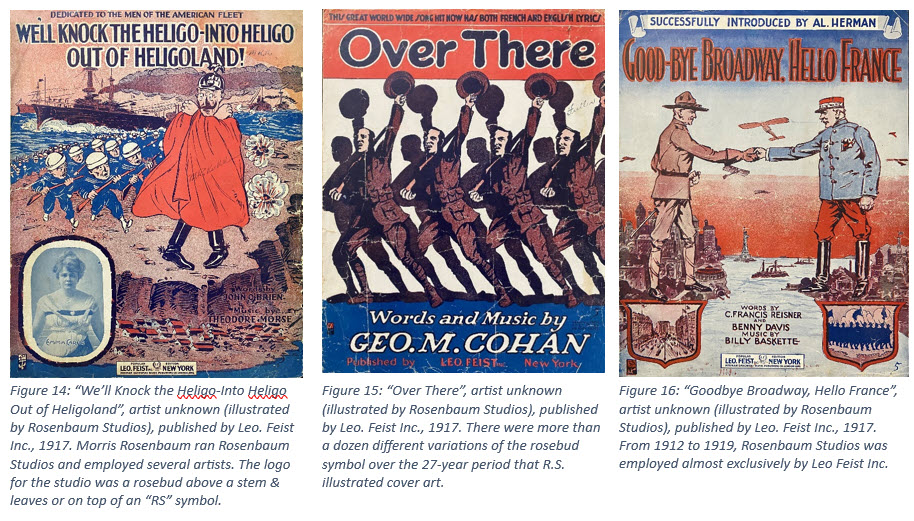
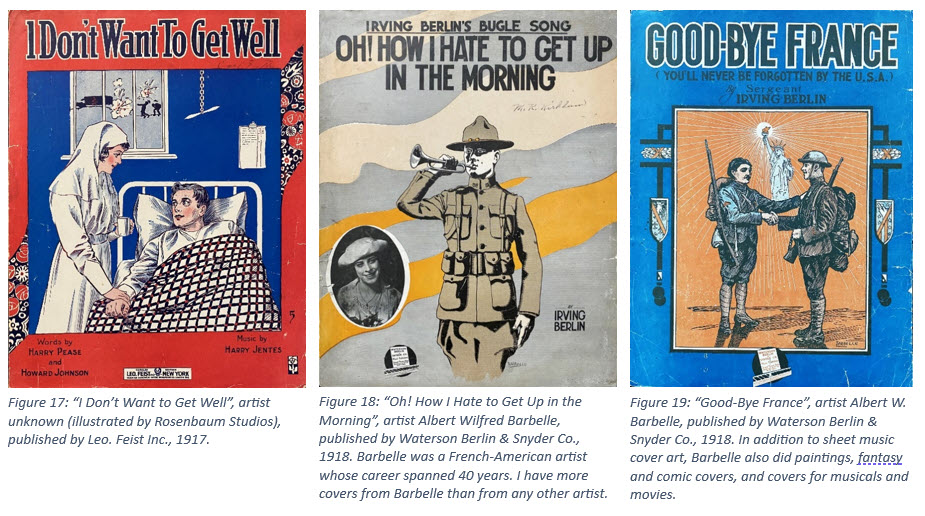
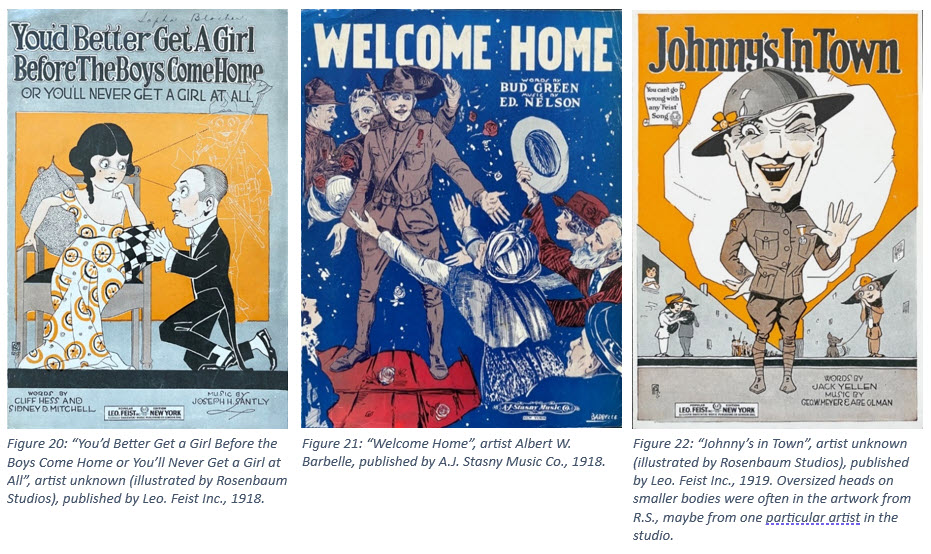
The 1920’s, or Roaring Twenties, began with Prohibition but became a post-war era of economic prosperity that introduced art deco designs, home telephones and radios, talking films, and the iconic fashionable and free-willed flappers (often depicted in cover art). Art Deco style included bold outlines, streamlined forms, tall, thin, elegant figures, vertically inclined patterns, geometrical shapes (triangular, trapezoidal), zigzag and chevron patterns, stepped forms, sweeping curves, and sunburst motifs. Art Nouveau, which came earlier, incorporated long, sinuous, asymmetric, rolling or waving organic lines and included objects like vines, flower stalks and buds, insect wings, tendrils, and natural arches.
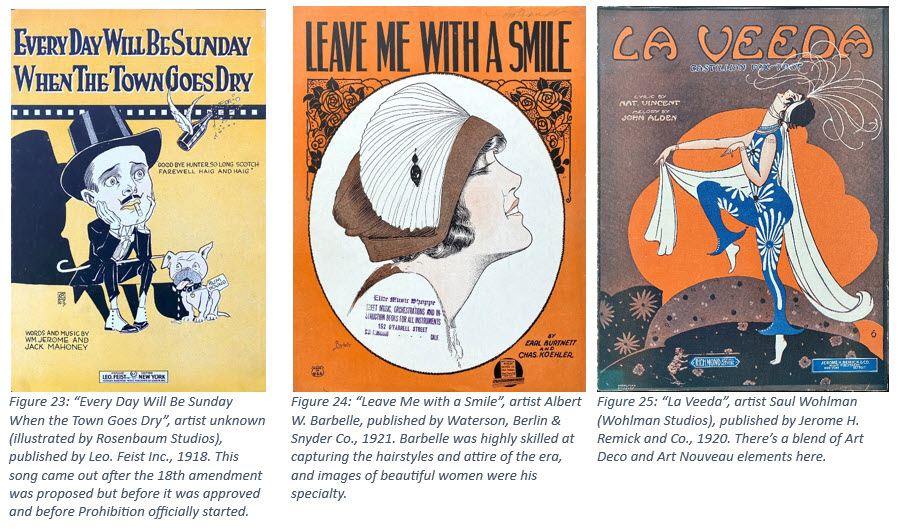
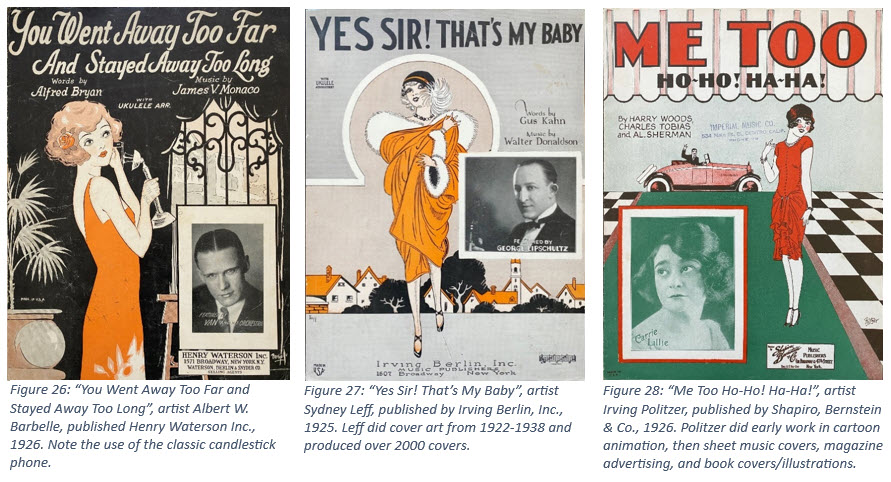
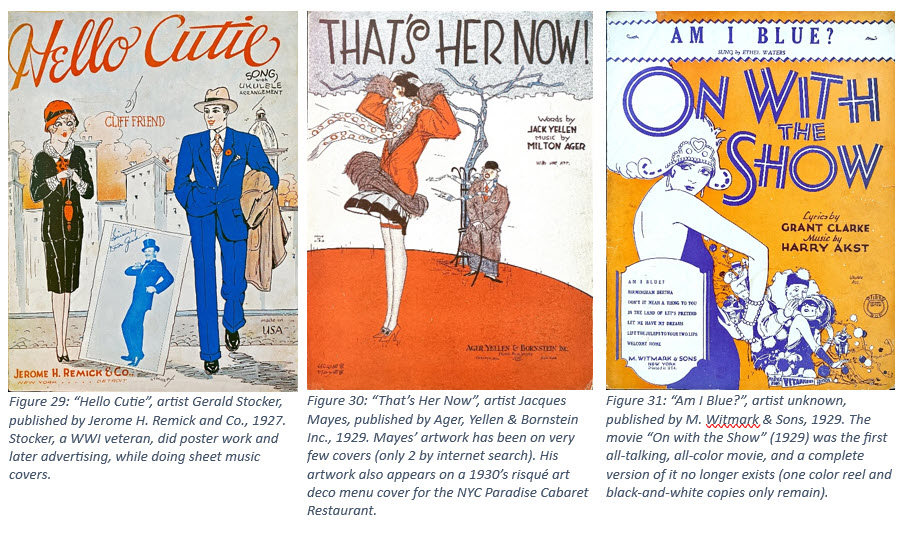
During the Ragtime and Jazz Eras, many tunes and their representative artwork originated from theatrical productions.
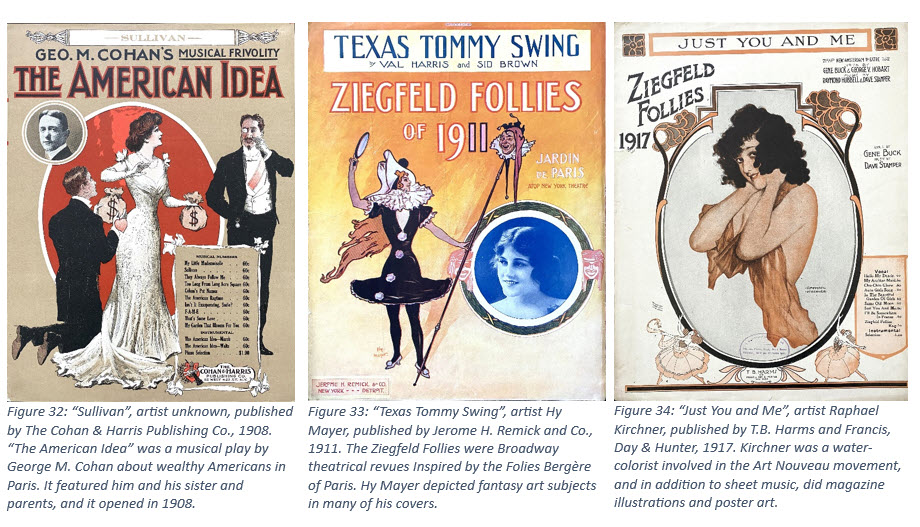
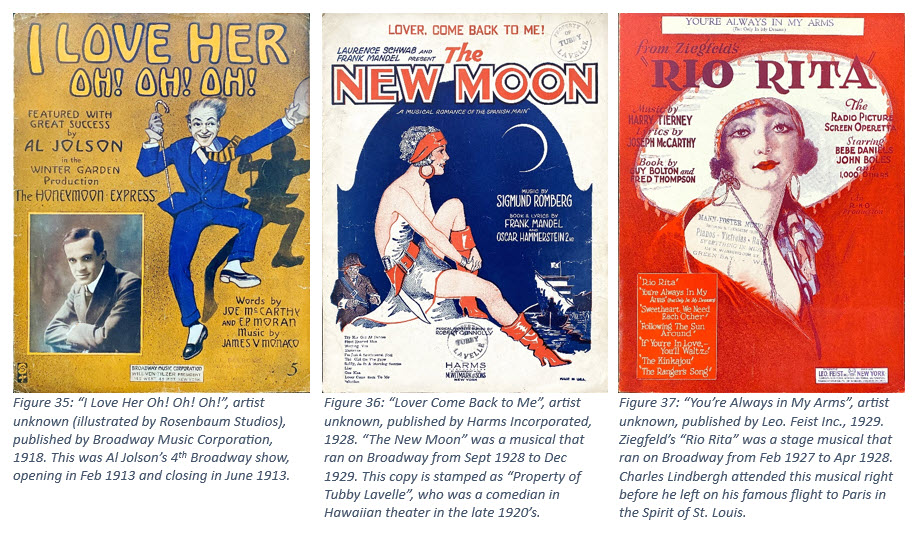
With little more than a song title or brief perusal of the lyrics (if there were any), artists had to capture the mood or theme of the piece to attract the masses. Covers conveying heartache, loneliness, and yearning had to catch the eye as readily as those that projected happiness or celebration of life, love, music, and dance.
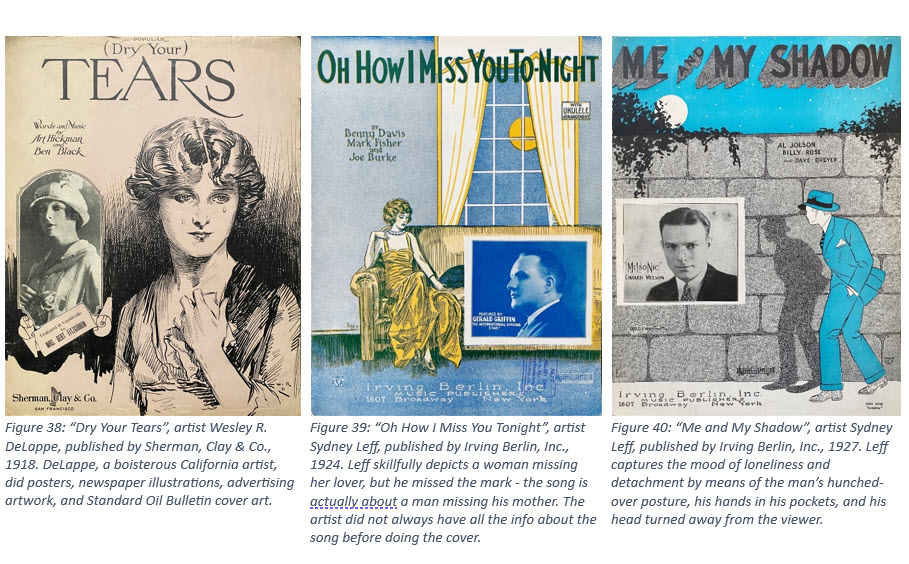
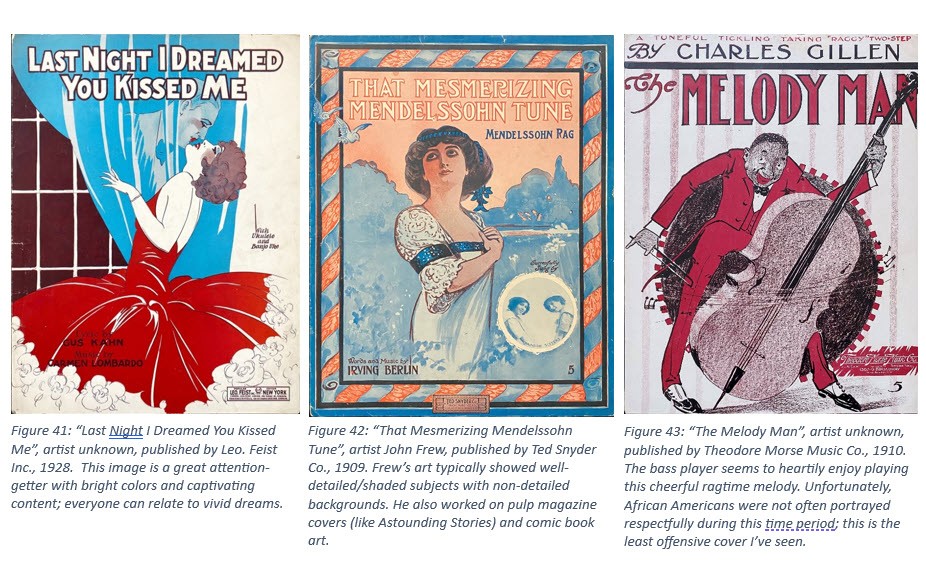
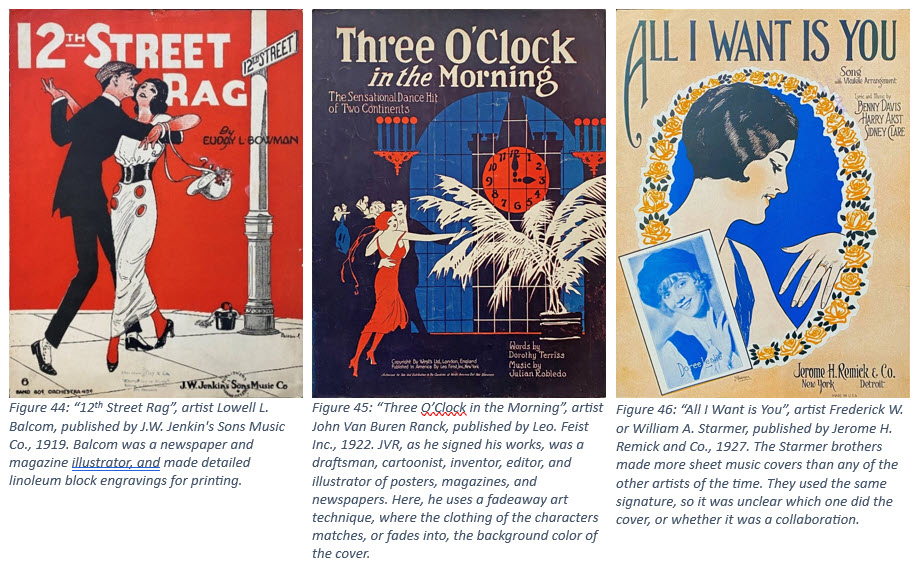
One can get a general idea of the time in which these works were created by checking the size of the sheet music. From the late 1800’s to around 1919, the standard size was about 10.5” to 11” by 13.5” to 14”. For a few years at the end of WWI and after (i.e. 1918 to 1919) the size was reduced on some to conserve materials, and the pages were 7” to 7.5” by 10.5”. In the 1920’s and beyond, the new standard became something in between, at 9” to 9.25” by 12” to 12.25”.
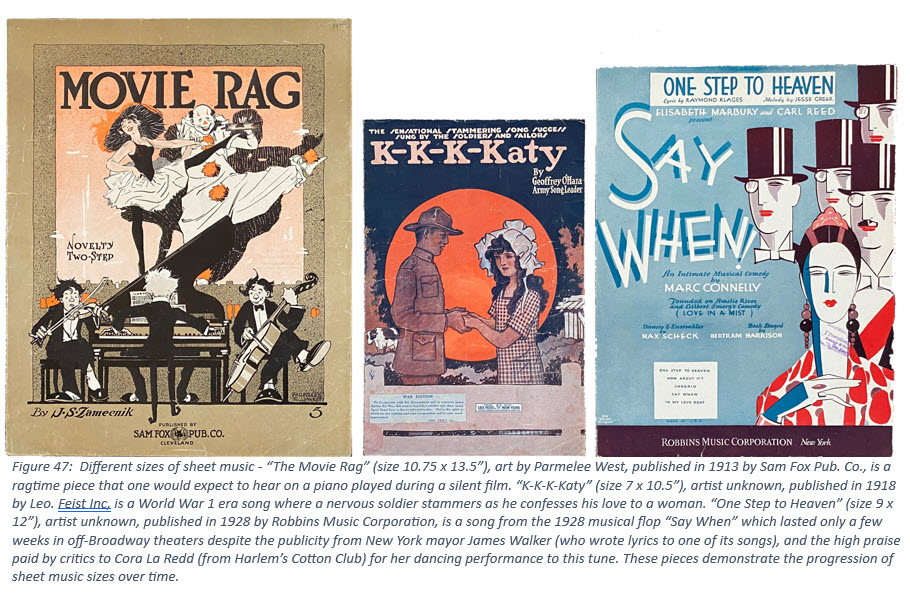
You may notice that the sheet music covers shown here are not without flaws. As with other older ephemera, the paper is fragile, sometimes brittle, and may exhibit chipping or tearing. I typically find sheet music at estate sales, thrown together loosely or stacked in boxes, exposed to potential damage. These works of art need special care to keep them preserved, so I treat them like I do my old comic books, making sure they are individually bagged and boarded and kept away from continued exposure to light (to prevent color fading).
Hopefully, you see some images among my sheet music covers here that spark your interest in either the artwork or the artists (or the songs). There were a lot of nice covers and talented artists that I didn’t have room to include here. As usual, the hardest part of writing this blog was picking which ones to share.
